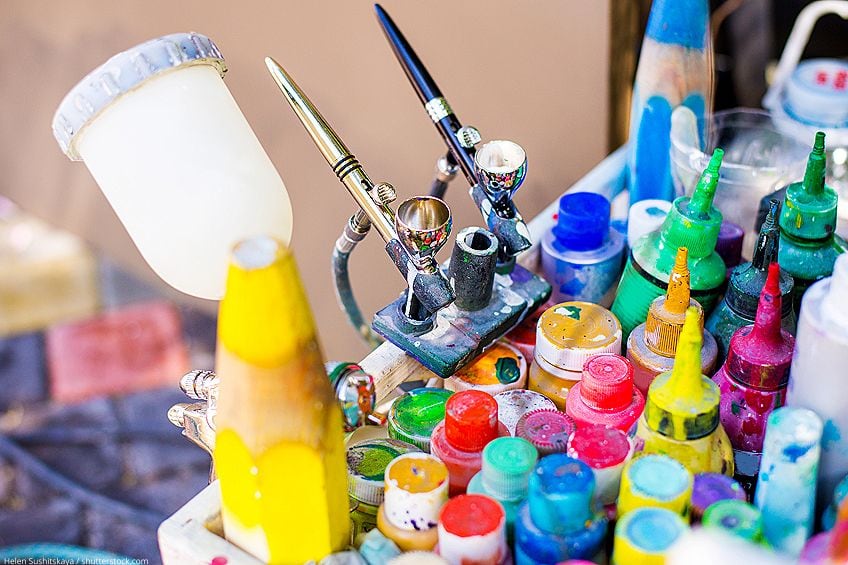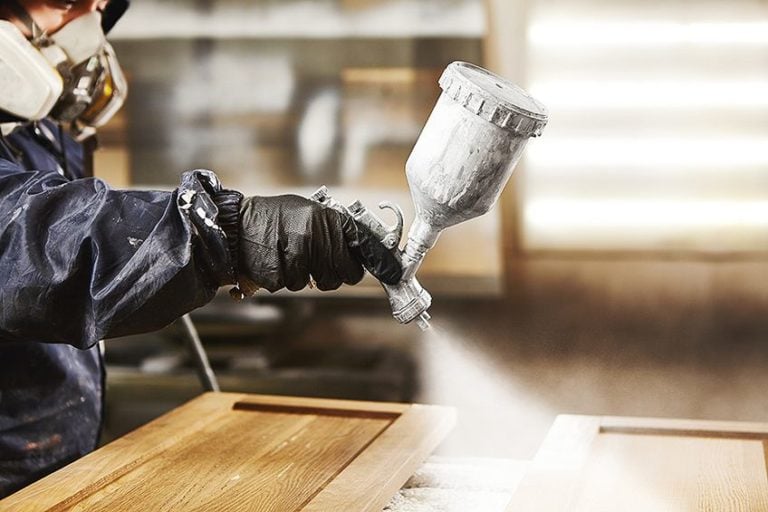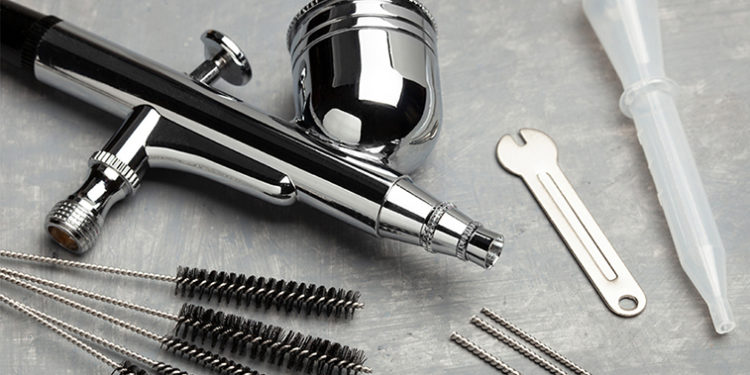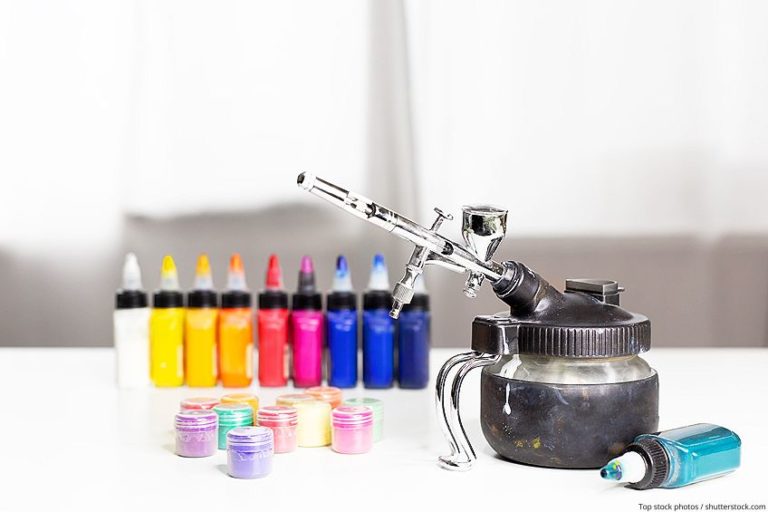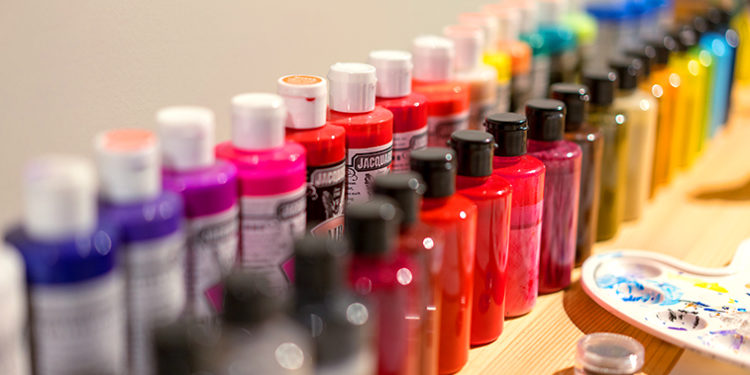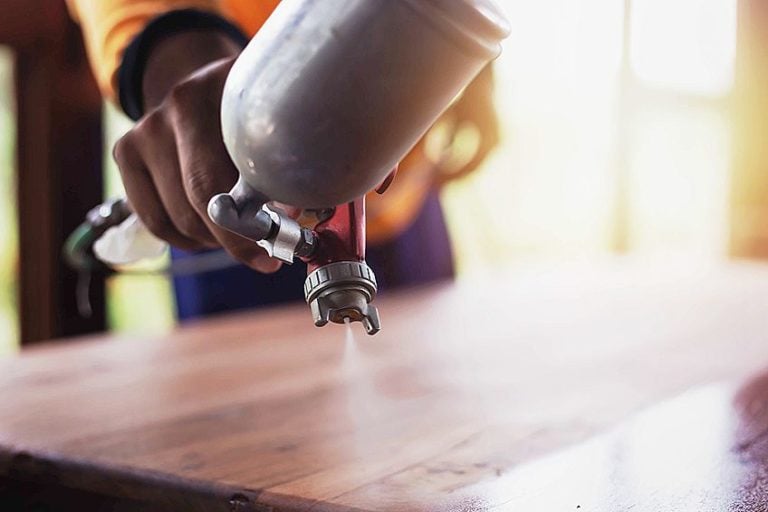Enamel Airbrush Paint – How to Thin Enamel Paint for Airbrush
This post may contain affiliate links. We may earn a small commission from purchases made through them, at no additional cost to you.
The question of whether or not you can use enamel paint in an airbrush is often raised, particularly as enamel paints are known for being durable and for having a glossy finish. Enamel paint is a substance that has been available for many years, the technology for which has progressed significantly. The following article will advise you on how you can use enamel paint with an airbrush.
Table of Contents
Are Enamel Paints Usable in an Airbrush?
To be able to use enamel paints in an airbrush, you will first have to thin out the enamel paint so as to correct the consistency. The most important thing to remember when using enamel paints in an airbrush is to ensure that you thoroughly clean out the airbrush once you have finished.
If you do not thin out the enamel paint to the correct consistency before using it with the airbrush, you run the risk of experiencing clogs and an inconsistent spray pattern.
Thinning Enamel Paint Before Application
Enamel paint refers to paints that are glossy and have a hard finish. Enamels are primarily designed to give a shiny, durable finish once cured. Enamels are made by using a combination of specific elements or components that result in their shiny finish. The problem is that the elements required to create enamel paint can cause trouble when working with an airbrush if the mixture has not been thinned out sufficiently.
The initial consistency of enamel paint may vary from brand to brand, but generally, the enamel will have to be thinned to be used in an airbrush. Through thinning the enamel paint, you will get a consistent, smooth spray of paint.
Ideally, you should thin your enamel paint to the same consistency as milk. This particular consistency will give you a great starting point. There is a chance that you will have to further thin out your enamel paint, but this will be dictated by the spray pattern you are looking to achieve and the way your particular airbrush performs.
We highly recommend that before using the airbrush on your project, you test your enamel paint on a spare surface that is similar to that on which you will be working. We recommend that you thin out your enamel paint on a plate or in a small cup.
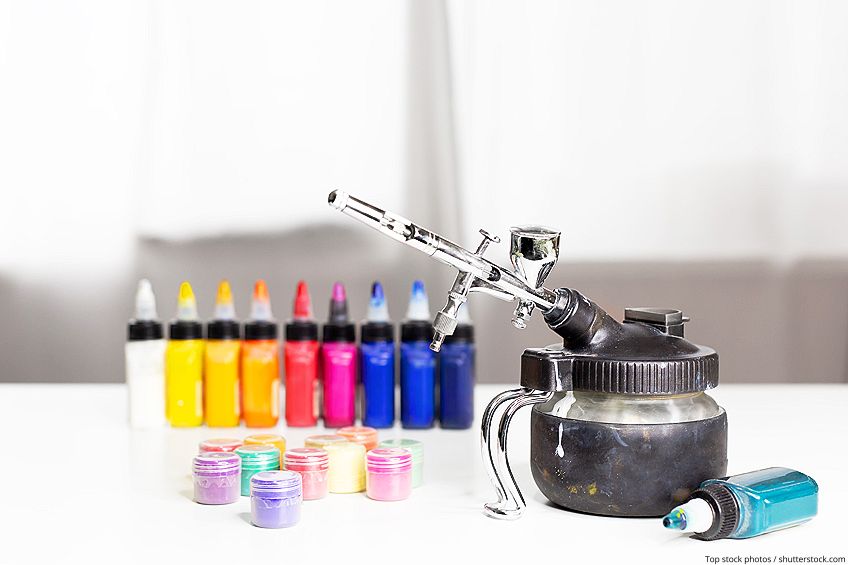
Cleaning Is Vital After Spraying Enamels
You will have to clean your airbrush whenever you use it, but it is especially important that you clean your airbrush thoroughly once you have finished working with enamel paints. As soon as you finish your project, it is imperative that you clean out your airbrush.
While certain paints can be a little bit more forgiving if they are left to dry in an airbrush, enamel is not one of these. As enamel paints are durable by design, allowing this paint to dry in your airbrush will likely result in your being unable to use the airbrush ever again.
Therefore, as soon as you have finished working with your enamel paint in your airbrush, clean the airbrush out as quickly as possible. You will also need to ensure that you are using the correct products to clean your airbrush so that you do not damage it.
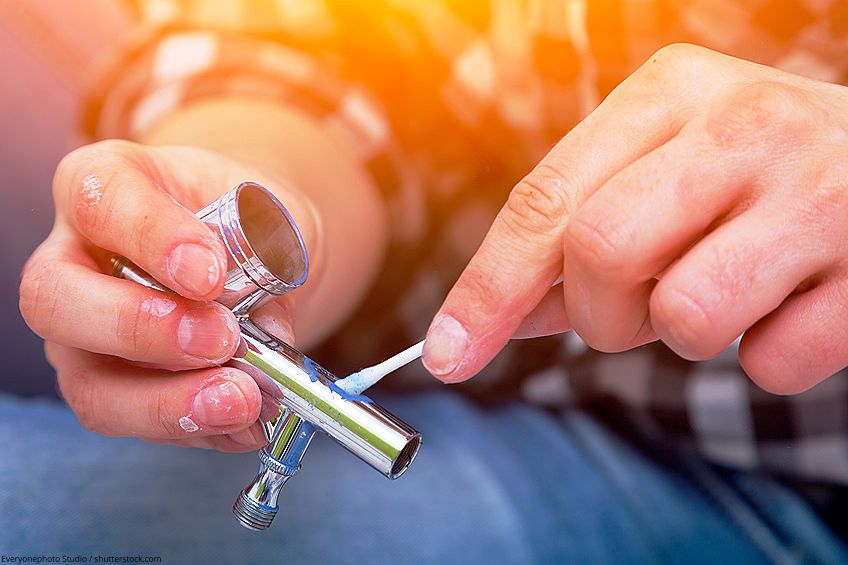
Safety and Protective Gear
Enamel paints are known for being very toxic, particularly those that are solvent-based. Thus, it is important to ensure that you are working in a well-ventilated area when you are using enamel paint with your airbrush. When spraying the airbrush, ensure that you are wearing a respirator that has been approved for use with an airbrush.
It is necessary to take precautions when you are working with enamel paints so that do not damage your health by breathing in the fumes given off by the enamel paint.
It is important to wear the relevant protective equipment whenever you are working with an airbrush, and in particular when using enamel paint with your airbrush. In addition to working in a well-ventilated space, you should wear a suitable respirator, and protective goggles and gloves.
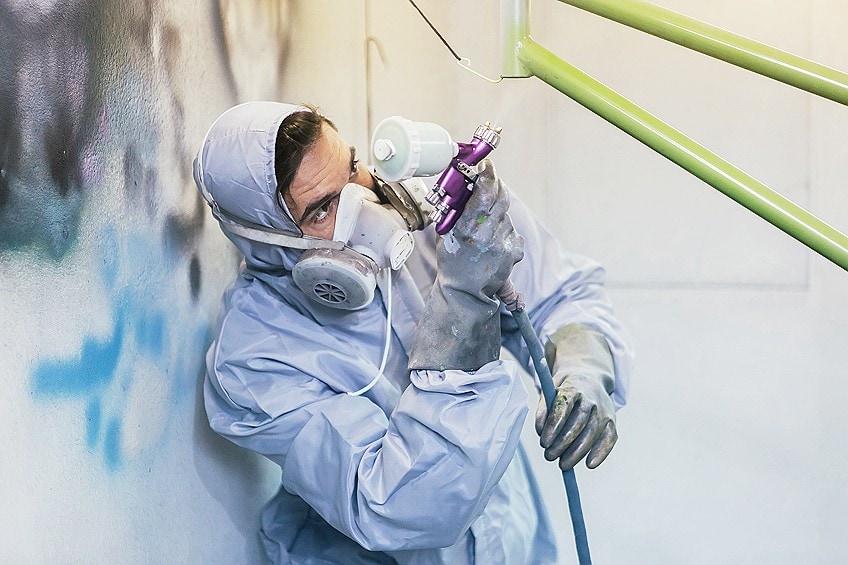
In Conclusion
You can use enamel paints in an airbrush, but you will have to thin the paint out before you can begin to use it, as this will ensure that you have the correct consistency to work with. Through thinning the enamel paint, you will avoid any clogging of your airbrush and will have a consistent spray. To thin your enamel paint, you will need to use the correct thinner, and ensure that you consult the manufacturer’s guidelines before beginning to thin the paint.
Frequently Asked Questions
What Should I Thin Enamel Paint With?
You can use mineral or white spirits for thinning or reducing enamel paints. You can also use manufactured thinning products, which are a combination of specialized mineral spirits and other ingredients.
How Do Enamel and Acrylic Paints Differ?
What is the Best Thinner to Enamel Paint Ratio?
Larissa Meyer is a 32-year-old mother from Michigan and creative spirit since childhood. Her passion for painting and drawing has led her to an education as an illustrator and a career as a freelance graphic designer. She has a Bachelor of Fine Arts in Illustration and a degree in Graphic Design. Larissa is a talented artist who is able to master a wide range of styles and techniques to bring her artistic vision to life. Her greatest passion is currently fluid painting and epoxy resin art. Larissa’s love for art and her knowledge and experience in illustration make her the perfect Creative Director for our fluid-painting.com team. She is the creative head of our team and shares her passion and knowledge with our community through articles and tutorials.
As a mother of a 2-year-old daughter, Larissa also understands the importance of fostering creativity in early childhood. She uses her experience and knowledge to help other parents inspire their children and develop their artistic skills as well.
Learn more about Larissa Meyer and about us.

